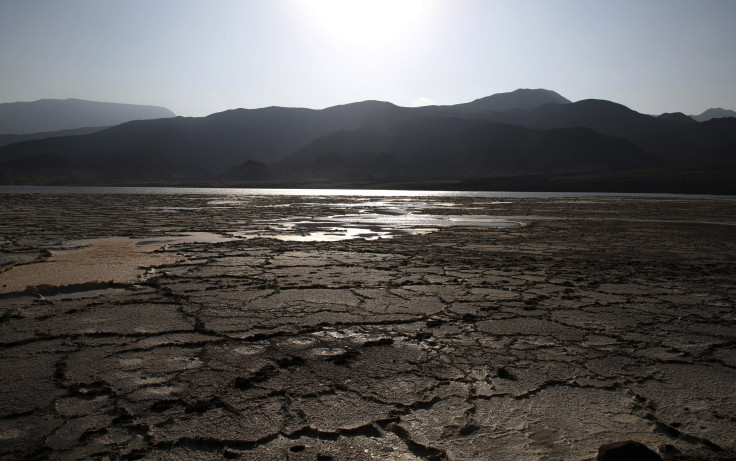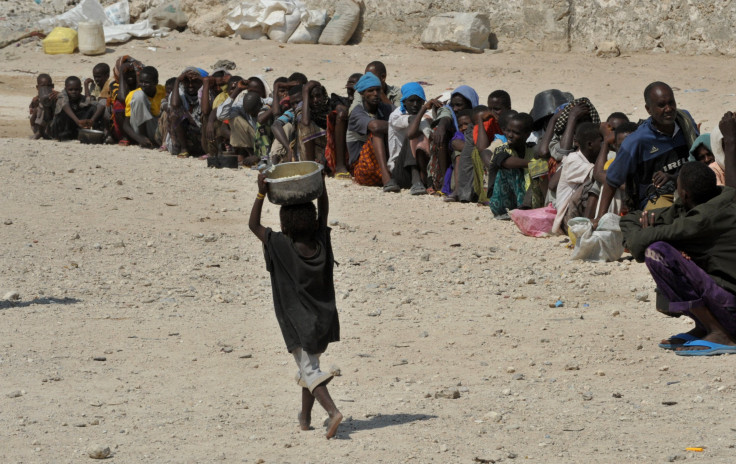The Horn Of Africa Is Rapidly Drying Out Due To Climate Change: Study

For drought and famine-stricken nations in Africa, climate change seemed to hold a tiny silver lining: Warmer global temperatures were expected to boost rainfall in the region and restore greenery to arid landscapes. But new research Friday suggested the opposite is happening in the Horn of Africa, where the land is drying out at an unusually fast pace, the result of soaring greenhouse gas emissions.
“Right now, aid groups are expecting a wetter, greener future for the Horn of Africa,” Peter deMenocal, who co-authored the study and heads the Center for Climate and Life at Columbia University’s Lamont-Doherty Earth Observatory, said in a statement. However, “The region is drying and will continue to do so with rising carbon emissions.”

The findings have dire implications for a region already grappling with decades of drought, extreme hunger and rising political instability. Much of the increasing aridity will affect Djibouti, Ethiopia and Somalia, among the most unstable countries in the world. Underscoring that point: When U.S. and Dutch researchers visited the region in 2001 to collect sediment cores, one vessel was attacked with rocket-propelled grenades off the Somali coast. A separate research vessel managed to slip through the Gulf of Aden unscathed, enabling scientists to extract long tubes of mud from the ocean floor.
“It was like the Wild West out there,” deMenocal told the Atlantic magazine in 2013.

The core samples date back about 40,000 years, allowing scientists to compare the paleoclimate record to more recent observations, including changes in temperature and aridity in the 20th century. For the study, published this week in the journal Science Advances, the research team extracted isotopes from leaf waxes in the samples and compared them to rates of drying seen over the past 2,000 years.
In drier climates, leaf waxes are enriched with deuterium, or heavy hydrogen isotopes. In wetter climates, leaf waxes show normal hydrogen isotopes, reflecting an abundance of rainfall. The researchers found an increasing shift toward heavy hydrogen in the past century as the region dried out.
“What we see in the paleoclimate record from the last 2,000 years is evidence that the Horn of Africa is drier when there are warm conditions on Earth, and wetter when it is colder,” Jessica Tierney, lead author of the study and associate professor at the University of Arizona, said in the statement.

The region-specific study contradicted the conclusions of more optimistic global models, which predicted heavier rainfall during the African region’s “short rains” season from September to November. The new study suggested those gains in rainfall will be offset by declining rainfall and severe dryness during the “long rains” season from March to May -- the period on which most of the region’s crops rely for moisture.
Drier climate conditions and a surge in extreme weather events are already taking a devastating toll in the Horn of Africa and other parts of the continent, international aid organization Oxfam said in an Oct. 1 report.
In Ethiopia, below-average rainfall is decimating crops and livestock, leaving 4.5 million people in need of food relief. To the south, in Zimbabwe, many people eat only one meal a day -- typically maize flour and a vegetable -- as drought decimates the country’s corn and wheat production and pushes up food prices. Malawi and northwest Mozambique, meanwhile, are facing food crises after extensive flooding earlier this year washed away food stockpiles and drowned fertile land.

Given the scale of threats in Africa and across the world, studying the hyper-local impacts of climate change will be critical to helping communities adapt and prepare, Tierney said. She added that the new research showed the importance of doing more region-specific studies, versus the broad global climate modeling most scientists use today.
“If we can simulate rainfall in these arid tropical and subtropical regions better, we can understand the future impact of climate change,” she said.
© Copyright IBTimes 2024. All rights reserved.




















